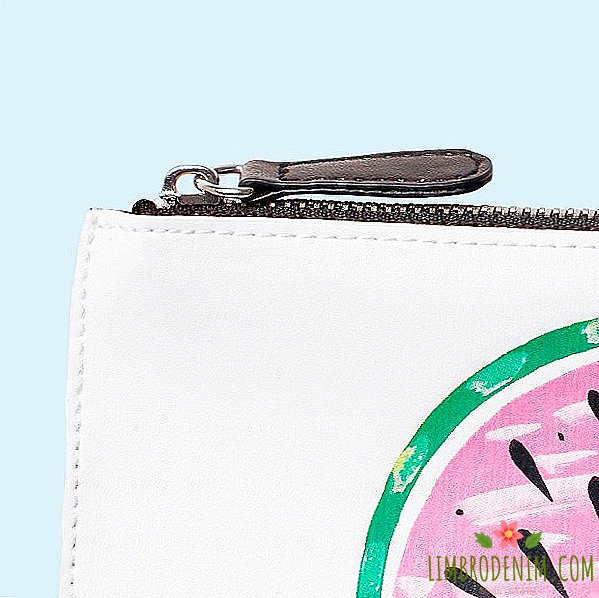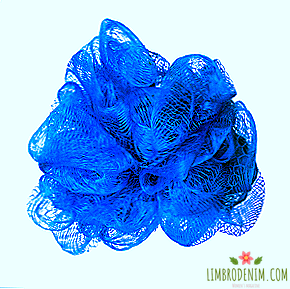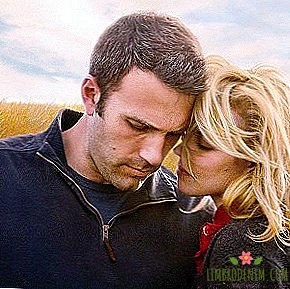Frida Kahlo: History of overcoming, full of contradictions
Until the end of April in St. Petersburg passes a retrospective of Frieda Kahlo - the great Mexican artist who became the heart and soul of female painting in the world. It is customary to tell about Frida’s life through the story of overcoming physical pain, however, as is usually the case, this is only one aspect of a complex and multifaceted path. Frida Kahlo was not just the wife of the recognized painter Diego Rivera or a symbol of mental and physical strength - the artist has been writing all her life, starting from her own internal contradictions, complex relationships with independence and love, talking about who she knew best of all - herself.

Frida Kahlo's biography is more or less known to everyone who watched the Julie Taymor film with Salma Hayek: carefree childhood and adolescence, a terrible accident, an almost random fascination with painting, acquaintance with the artist Diego Rivera, marriage and the eternal status of "everything is difficult." Physical pain, emotional pain, self-portraits, abortions and miscarriages, communism, romance novels, world fame, slow extinction and long-awaited death: "I hope that the care will be successful and I will not return," sleeping Frieda flies into bed for eternity.
We don’t know if the care itself was successful, but the first twenty years after it seemed that Freda’s wish was fulfilled: she was forgotten everywhere, except for her native Mexico, where the house-museum almost immediately opened. In the late 1970s, on the wave of interest in female art and neo-Mexicanism, her works began to appear occasionally at exhibitions. Nevertheless, in 1981, the Oxford Companion to Twentieth-Century Art Dictionary of Modern Art gave her only one line: "Kahlo, Frida. See Rivera, Diego Maria".
"There were two accidents in my life: one when the bus hit a tram, the other is Diego," Frida said. The first accident made her start painting, the second made an artist. The first responded to physical pain all his life, the second caused spiritual pain. These two experiences later became the main themes of her paintings. If a car accident really was a fatal accident (Freda had to go on another bus, but got out halfway to look for a forgotten umbrella), the difficult relationship (after all, Diego Rivera was not the only one) was inevitable due to the inconsistency of her nature which strength and independence were combined with sacrifice and obsession.


↑ "Frida and Diego Rivera", 1931
I had to learn to be strong in my childhood: first helping my father to survive epileptic seizures, and then coping with the consequences of polio. Frida played football and boxing; at school she was in a gang of "kauchas" - hooligans and intellectuals. When management of the school invited Rivera, then a recognized master, to paint the wall, she rubbed the steps of the stairs with soap to see how this person with the face of a toad and the body of an elephant slipped. She considered girl companies to be commonplace, she preferred to be friends with boys and met the most popular and clever of them, who also studied several classes older.
But having fallen in love, Frida seemed to lose her mind, which she so valued in people. She could literally pursue the object of her passion, throwing letters, seducing and manipulating, all in order to play the role of a faithful companion. So at first her marriage to Diego Rivera was. Both of them changed, dispersed and converged again, but, according to the memories of friends, Frida was often inferior, trying to preserve the relationship. "She treated him like a beloved dog," recalled one of her friends. "He’s with her like a beloved thing." Even in the "wedding" portrait "Frida and Diego Rivera" only one of the two artists is depicted with professional attributes, a palette and brushes - and this is not Frida.
While Diego was writing frescoes for days on end, spending the night in the woods, she carried him lunch baskets, worked on bills, saved on much-needed medical procedures (Diego spent a fortune on her collection of pre-Columbian statues), listened attentively and accompanied at exhibitions. Under the influence of her husband, her paintings also changed: if the very first portraits of Frida painted, imitating Renaissance artists from art albums, then thanks to Diego, the national traditions of Mexico, sung by the revolution, penetrated into them: an image of bleeding wounds with a pomp of flowers, laces and ribbons.
↑ "Alejandro Gomez Arias", 1928

To please her husband, she even changed her jeans and leather jackets to fluffy skirts and became a "teuan". This image was completely devoid of any authenticity, since Frida combined clothes and accessories from different social groups and eras, could wear an Indian skirt with a Creole blouse and Picasso's earrings. In the end, her ingenuity turned this masquerade into a separate art form: starting to dress for her husband, she continued to create unique images for her own pleasure. In her diary, Frida noted that the costume was also a self-portrait; her dresses have become the characters of the paintings, and now accompany them at exhibitions. If the paintings were a reflection of an internal storm, then the costumes became her armor. It is no coincidence that a year after the divorce, “Self-portrait with cropped hair” appeared, in which the male suit took the place of skirts and ribbons - in a similar Frida once posed for a family portrait long before meeting Diego.
The first serious attempt to get out of the influence of her husband was the decision to give birth. Natural childbirth was impossible, but there was hope for a cesarean section. Freda rushed. On the one hand, she was eager to continue the race, stretch that red ribbon, which she would later portray in the picture “My grandparents, my parents and me”, to have “little Diego” at her disposal. On the other hand, Freda understood that the birth of a child would tie her to a house, would interfere with her work and would distance her from Rivera, who was totally against children. In the first letters to a friend of the family to Dr. Leo Eloisser, pregnant Frida asks which option will cause less harm to her health, but, without waiting for an answer, she decides to keep the pregnancy and no longer retreats. Paradoxically, the choice that is usually imposed on a woman by default, in the case of Frida, becomes a revolt against custody of her husband.
Unfortunately, the pregnancy ended in miscarriage. Instead of the “little Diego”, the “Henry Ford Hospital” was born - one of the saddest works with which the series of “bloodied” paintings began. Perhaps it was the first time in the history of art, when the artist told about women's pain with the utmost, almost physiological honesty, so much so that the legs were twitching in men. Four years later, Pierre Collet, the organizer of her Paris exhibition, did not even immediately decide to exhibit these paintings, finding them too shocking.

Finally, that part of the life of a woman who was always shamefully hidden from prying eyes was revealed in a work of art.
The misfortunes pursued Frida: after the death of the child, she survived the death of the mother, and one can only guess what a blow for her was another novel by Diego, this time with her younger sister. She, nevertheless, blamed herself and was ready to forgive, if only not to become a "hysterical woman" - her thoughts on this subject painfully resemble the eternal thesis that "a woman should be wise." But in the case of Frida, submission and ability to endure went hand in hand with black humor and irony.
Sensing her secondary importance, the insignificance of her feelings in comparison with men's, she brought this experience to the point of absurdity in the film “A Few Small Injections”. “I just poked her several times,” said a man who had stabbed his girlfriend at the trial. Having learned about this story from newspapers, Frida wrote a complete sarcasm of work, literally covered with blood (spots of red paint "splashed out" even on the frame). Over the woman’s bloody body stands a deadpan murderer (his hat hints at Diego), and on top, like a mockery, hovers a name written on a ribbon held by pigeons, so similar to a wedding ornament.
Among the fans of Rivera there is an opinion that the paintings of Frida are “salon painting”. Perhaps, at first, Frida herself would agree with that. She was always critical of her own creativity, did not seek to make friends with gallery owners and dealers, and when someone bought her paintings, she often complained that money could be spent with greater profit. This was a bit of flirtatiousness, but, frankly, it is difficult to feel confident when your husband is an acknowledged master working day and night, and you are self-taught, having a hard time choosing painting between household chores and medical operations. "The works of the beginning artist are definitely significant and even threaten her famous husband crowned with laurels," was written in the press release for the first New York exhibition of Frida (1938); "Baby Frida" - this is how the author of the publication at TIME called her. By that time, the “beginner” “baby” had been writing for nine years.

↑ Roots, 1943
But the lack of high expectations gave complete freedom. “I write myself because I spend a lot of time alone and because I am the topic that I know best,” said Frida, and in addressing this “topic” there was not only subjectivity, but also subjectivity. The women who posed for Diego turned into unnamed allegories on his frescoes; Frida has always been the main character. This position was strengthened by the doubling of portraits: she often wrote herself at the same time in different images and hypostases. A large canvas, "Two Fridas" was created during the divorce process; on it, Frida wrote herself "beloved" (on the right, in a Teuan suit) and "unloved" (in a Victorian dress bleeding in blood), as if declaring that now she herself is the "second half". In the painting My Birth, created shortly after the first miscarriage, she portrays herself as a newborn, but obviously also associates with the figure of a mother whose face is hidden.
The above-mentioned New York exhibition helped Frieda to become freer. She felt her independence for the first time: she went alone to New York, got acquainted, received orders for portraits and started romance not because her husband was too busy, but because she liked it so much. The exhibition was generally accepted favorably. Of course, there were critics who said that Frieda’s pictures were too “gynecological”, but it was rather a compliment: finally, that part of the woman’s life that theorists of жен feminine ’reasoned for centuries, but which was always shyly hidden from prying eyes, was Revealed in a work of art.
The New York exhibition was followed by a Parisian exhibition, organized with the direct participation of Andre Breton, who considered Fried a prominent surrealist. She agreed to the exhibition, but neatly rejects from surrealism. There are many symbols on Frida's canvases, but no hints: everything is obvious, as an illustration from an anatomical atlas, and at the same time it is flavored with excellent humor. The dreaminess and decadence inherent in the surrealists irritated her, their nightmares and Freudian projections seemed childish prattle compared to what she had experienced in reality: "Since [the accident] I have been obsessed with depicting things as my eyes see them, and nothing more". “She has no illusions,” Rivera assented.


↑ "My grandparents, my parents and me", 1936
Frida had no illusions, agreeing to a divorce, had no illusions, agreeing to remarry with Diego, but no longer drifted with the flow. The pain of the gap she turned into her best work, and the suffering Diego rolled out the conditions: she will contain herself and they will not have sexual relations. She began to wear jeans again, was engaged in housekeeping and taught students with pleasure, wrote “Self-portrait with a scythe”, on which the previously cropped hair was interwoven into a fancy pretzel, and finally resigned to the inability to give birth, turned to the topic of fertility. In her paintings more and more roots, stems and fruits appeared, and in the diary entries the refrain "Diego is my child."
It became impossible for a husband to be a native mother after a series of operations on the spine and amputations: first a pair of fingers on the right leg, then - the whole leg. Frieda habitually suffered pain, but was afraid of losing mobility. Nevertheless, she brave: getting ready for surgery, put on one of the best dresses, and ordered a red leather shoe with embroidery for the prosthesis. Despite the serious condition, dependence on narcotic painkillers and mood swings, she prepared for the 25th anniversary of the first wedding and even persuaded Diego to take her to the communist demonstration. Continuing to work with all my might, at some point I thought about making my paintings more politicized, which seemed unthinkable after so many years spent depicting personal experiences. Perhaps if Frieda survived the disease, we would recognize her from a new, unexpected side. But pneumonia, caught up on that very demonstration, cut short the artist’s life on July 13, 1954.
"For twelve years of work, everything that did not come from the inner lyric motivation that forced me to write was excluded," Fried explained in the application for the Guggenheim Foundation grant in 1940, "Since my topics were always my own feelings, my state of mind and responses to that which invested life in me, I often embodied it in the image of myself, which was the most sincere and present, so I could express everything that happens in me and in the external world. "
↑ "My Birth", 1932
Photo: Wikipedia (1, 2), WikiArt (1, 2, 3, 4, 5)





